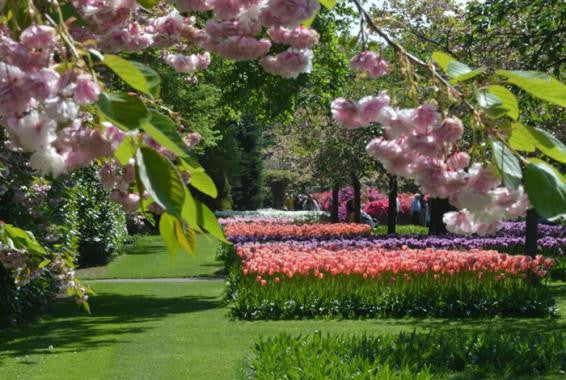Tulips In Hot Climates: Is It Possible?
Their vibrant colors, clean lines and classic cup-like shapes have made tulips a firm favorites for centuries. A single bloom makes a stunning statement in a simple vase, while fields of colored blooms paint entire landscapes. It’s not surprising you might want to grow these bulbs in your own garden, even when you live in a climate not considered suitable for growing them. However, just because you don’t have the necessary cold winters and cool soil needed for tulips, you still have a great chance of success! With a little help from your refrigerator, and if you’re prepared to play a little trick on nature and your tulip bulbs, you can still get to see tulips blooming in your garden come spring!
Ideally, tulips like a cold period of about 3 months in soil that’s below 55 degrees F to develop flowers and they need a 4 to 6 weeks spell in cool soil to grow healthy roots. If the soil in your garden can’t provide that because you live in a warmer area, you can try to trick the bulbs by chilling them in your refrigerator. The chances are that pre-chilled bulbs will not flower again the next year, but the wonderful once-off show next spring will probably send you out to get more next year.
How do you know if the climate is right in your area?
For most tulips, the hardiness or growing zone is a good indication. Tulip bulbs will definitely require pre-chilling in zones 8 to 10, and as in Zone 7, will need special attention when it comes to where and when to plant your bulbs. If you don’t know which growing zone you’re in, you can take a look at our growing zone map. As a guideline, most of the coastline, and the southern and south-western areas of the US fall between Zones 7 and 10.
Chilling tulip bulbs prior to planting
You will need to chill your flower bulbs yourself prior to planting for about 3 months. Store them in a ventilated paper bag, mesh bag or egg carton in the refrigerator. Just avoid keeping the bulbs near fruit, as gases from the fruit might damage them. This gives the bulbs their “cold period” and the flower should start forming inside it. Plant them at the coldest time of the year, making sure the bulbs don’t warm up while you’re doing so. In warmer climates, tulips prefer full or partial shade to the full sunlight they normally require. If you are worried that even then your soil isn’t going to be cool enough for good, strong roots to develop, you could always plant the bulbs in pots, and put the pots back in the refrigerator for another month while the roots form.

Tulips that withstand higher temperatures
Some smaller tulip species, as well as wild tulips are well suited to the Southern United States where the winter periods are shorter, and do not seem to require chilling. Wild tulips may be small in stature, only reaching heights of 4 to 10 inches when they flower, in mid to late April. They also don’t provide the same sort of grand spectacle as larger tulips. However, they do survive in warmer growing zones, like Zones 8 to 10. They thrive when planted together, open early and flower abundantly. This provides a spectacular magic carpet of color. All perform well as naturalizing plants, so you have a good chance of having another show the next year. As for the spectacular Darwin Hybrids, they’re among the most heat tolerant of the tall, showy tulips as well as being among the easiest to grow. So you can have tulips in your garden in a hot climate - provided the climate is not too hot; you are prepared to put in the effort required to pre-chill the bulbs if necessary; or you adapt to the idea of seeing the beauty in the little things. Particularly when that beauty is in the form of nature’s small wild botanical tulips.

